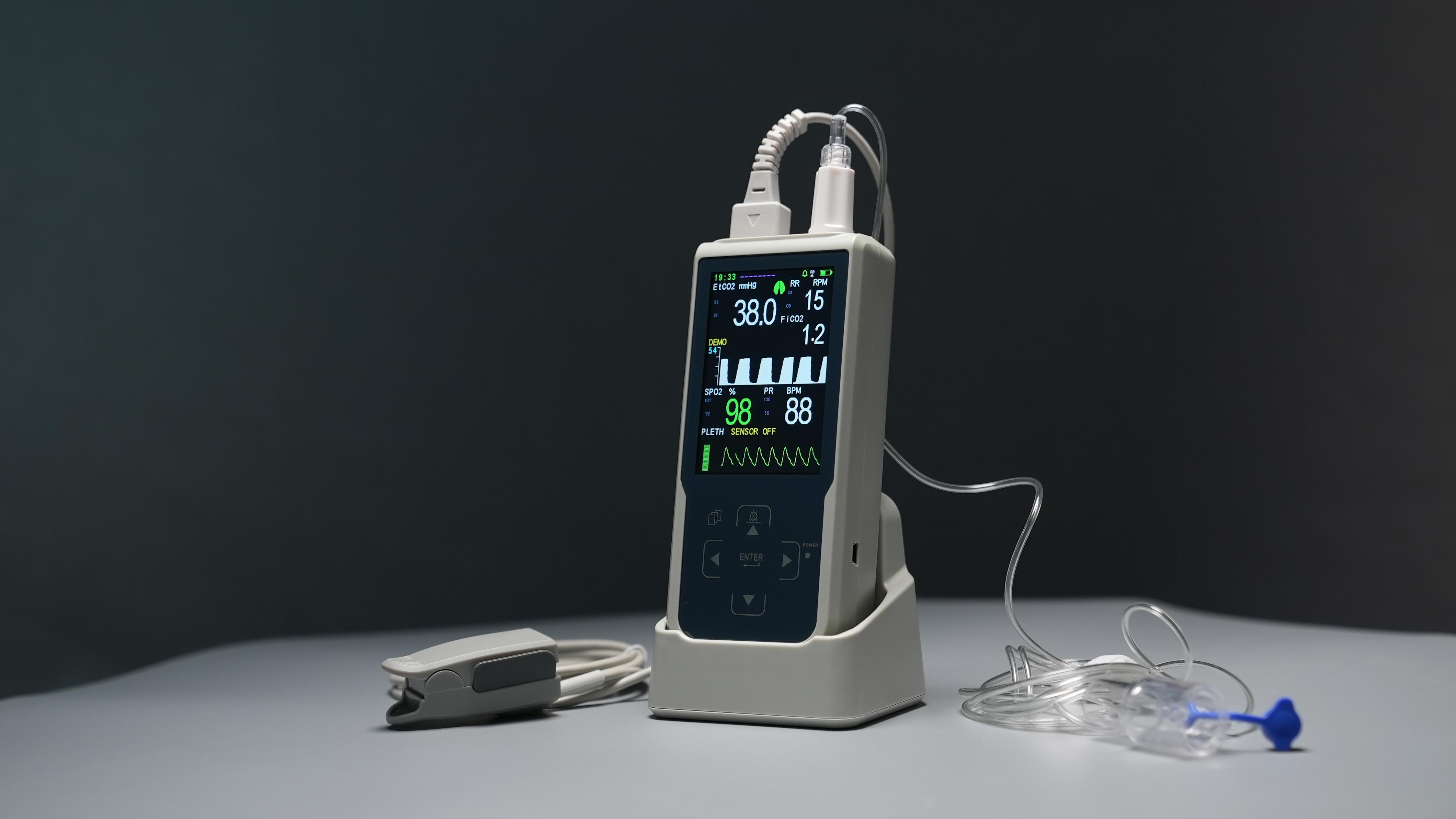In rehabilitation medicine, monitoring end-tidal carbon dioxide (ETCO2) levels can indirectly assess a patient's respiratory muscle strength. During normal breathing, respiratory muscles (such as the diaphragm and intercostal muscles) participate in lung ventilation, leading to an increase in carbon dioxide content in exhaled air, which is reflected in ETCO2 monitoring results.
If a patient's respiratory muscle strength is weakened, for example, due to muscle atrophy, nerve damage, or other conditions causing respiratory muscle dysfunction, it may affect the carbon dioxide content in exhaled air. In such cases, ETCO2 levels may exhibit a decrease or unstable trend, correlating with the weakening of the patient's respiratory muscle strength.
Additionally, utilizing ETCO2 monitoring to guide endurance training in rehabilitation medicine provides vital physiological feedback, aiding in the development of personalized rehabilitation plans and effective exercise regimens. Below is a detailed introduction to guiding endurance training:
1. Assessing Endurance Levels:
ETCO2 monitoring provides information on the gas exchange and metabolic status of patients. By monitoring ETCO2 levels, rehabilitation physicians can understand the production and clearance of carbon dioxide during exercise, thus evaluating the patient's endurance levels.
2. Adjusting Exercise Intensity and Duration:
Based on observed changes in ETCO2 levels, rehabilitation physicians can adjust the intensity and duration of exercise training. For example, when a patient's ETCO2 levels are within the normal range, gradually increasing exercise intensity and duration can enhance endurance levels. Conversely, if a patient's ETCO2 levels rise too rapidly or exceed the normal range, reducing exercise intensity or extending rest periods may be necessary to avoid overexertion and adverse reactions.
3. Monitoring Training Effects:
Continuous monitoring of ETCO2 levels can help assess the effectiveness of exercise training. As endurance improves, patients' ETCO2 levels may exhibit corresponding changes. By comparing ETCO2 levels at different time points, rehabilitation physicians can evaluate the effects of exercise training and adjust training regimens to further enhance patient endurance and rehabilitation outcomes.
4. Preventing Exercise-Related Complications:
Monitoring ETCO2 levels enables rehabilitation physicians to promptly identify abnormal conditions that may arise during exercise, such as breathing difficulties or increased respiratory rates, and take appropriate measures. This helps prevent exercise-related complications such as exercise-induced respiratory distress or excessive fatigue, ensuring patient safety and health.
Through ETCO2 monitoring, rehabilitation physicians can indirectly assess a patient's respiratory muscle strength and develop personalized rehabilitation training programs, including respiratory muscle exercises and functional training, to improve respiratory function and quality of life. Moreover, this monitoring allows for more accurate evaluation of patient endurance levels, aiding in the development of personalized exercise training programs, which not only improve patient endurance and rehabilitation outcomes but also prevent exercise-related complications, enhancing patient quality of life.
